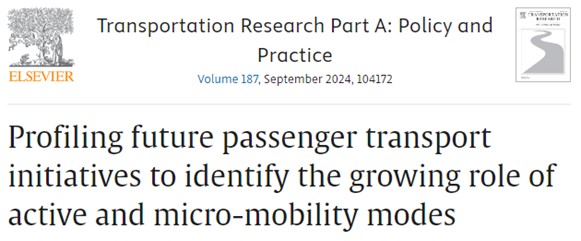David A. Hensher, Edward Wei, Wen Liu, Camila Balbontín
Abstract
There is growing interest in recognising the role that active and micro-mobility modes play in the full suite of modal-based activities. While the idea of the ’next normal’ since the heady days of COVID-19 remains unclear, there are signs that living locally and the impact of increased working from home, has generated greater interest in active travel and micro-mobility for local trips, but also as ways to access and/or egress modes for longer trips. A new travel and mobility survey has been designed in which revealed and stated preference data are collected to identify current and future interest in using motorised and non-motorised modes in a typical week. It considers mode use for all stages of a door-to-door journey in an extensive number of trip profiles. Trip frequency over a 7-day week is much more informative than the more traditional choice of a mode survey approach for a typical day. We estimate a series of negative binomial models on the stated preference (SP) scenario data to gain an understanding of the role that active and micro-mobility modes play as access, egress, and linehaul modes in an origin–destination trip. The descriptive profiles and estimated models provide a way to identify and hence focus the treatment of active and micro-mobility modes in government policy settings designed to support the move to more sustainable modes for all local passenger trips. The modes showing the most potential from the SP inquiry include EV car driver, car passenger, walk and E-bike/E-Scooter, if external conditions allow (i.e., similar to SP scenarios when external restrictions are removed). This growing interest in non-public transport opportunities looks like adding challenges to growing public transport patronage.
